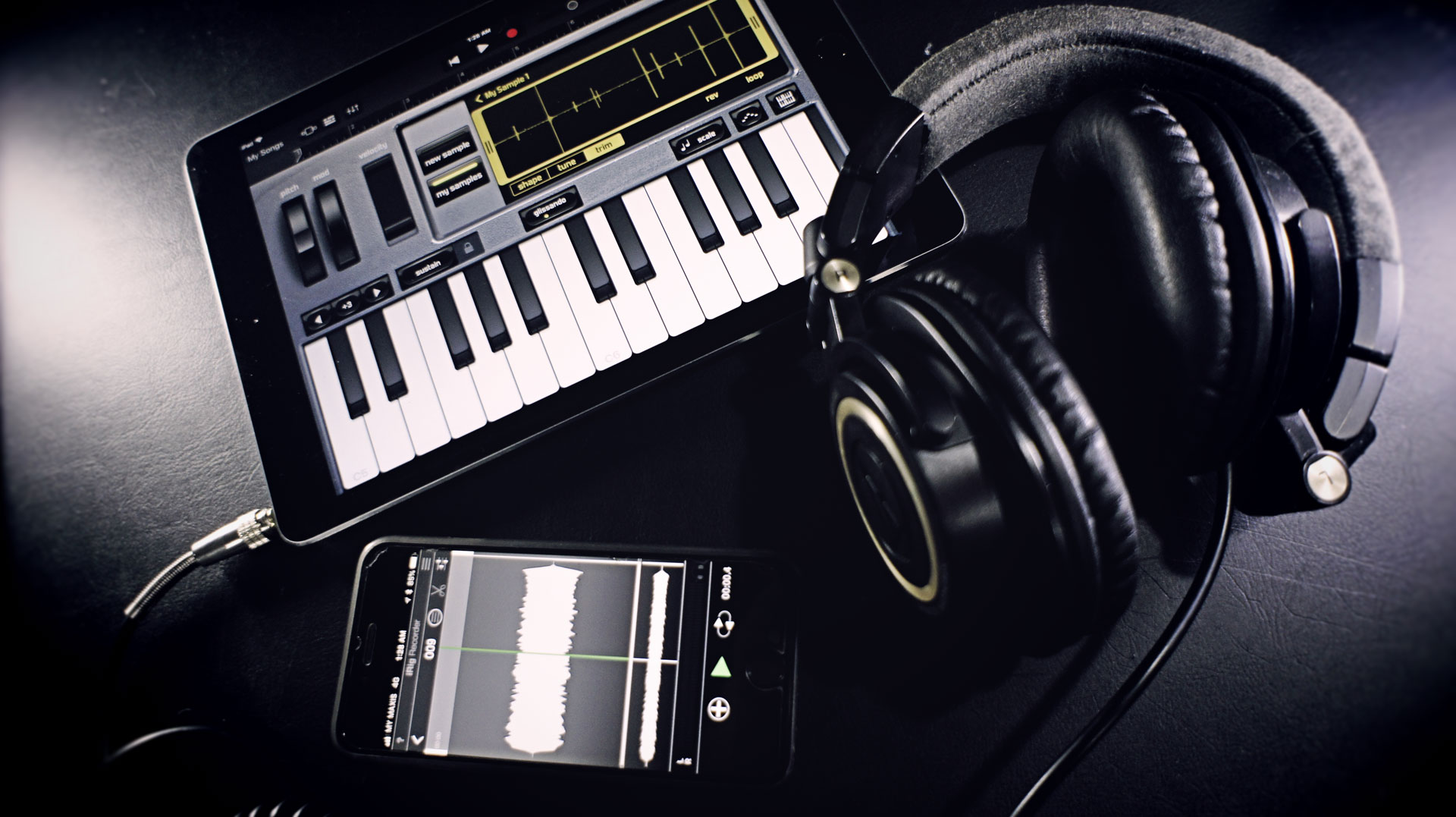In the recent Taylor’s Design School Faculty Exhibition, LOOK, that ran for two weeks in November 2018, I showcased my audio production work for games and animation which were done using only an iPad.
To be honest, before starting on the project, I was never a fan of composing music on the iPad. I have friends who are doing it as does my brother. They all seem to love it. I am used to my PC recording setup with multiple screens, high-quality audio interface, MIDI keyboard and controllers, and the variety of VST plugins and instruments. Whenever I tried to create something with the iPad, I faced the frustration of not having familiar tools and workflow. Therefore, I was discouraged from spending a decent amount of time to explore it properly.
Obviously, the iPad is a powerful computer. With the right software, one can perform various tasks. The built-in microphone is not that bad either! During one of my Sonic Design classes (at Taylor’s University), I’ve conducted a short experiment to compare the sound recording of various devices. In this experiment, the students were tasked to record their voice using their own smartphones. We pretty much concluded that the iPhones regardless of the various models, and the higher range Android phones, are definitely able to capture good quality sound recording.
But, it was during the faculty exhibition, that I decided to challenge myself and to leave the comfort of my glorious workstation and work on a sound design project entirely using an iPad and an iPhone.
The objectives were
- to explore sound design and audio production workflow on the iPad,
- to prove that expensive/fancy audio hardware is not necessary
- to encourage people to explore and learn the craft of sound design by using equipment that they probably already have i.e. a tablet.
The Tools
For this project, I used the Unity 3D game demo to replicate and replace the sound asset that they have. The app I used, Garageband, is free to download and use on the iPad. Two apps are not free: Samplr (USD 9.99), to tweak and play around with the recorded sound bits, and Audioshare (USD 3.99) to edit and export the audio to Wav file.
The Process
Most of the sound is generated by GarageBand. I played around with the synth and found that the pads sounded very suitable to the ambience sound I wanted to replicate. The thing that I didn’t foresee was the use of multitouch that resulted in really nice sound.
I’ve spent quite some time just exploring GarageBand though I had never used it to compose music so there are a few things that left me a bit puzzled for a while. For example, expanding the timeline to have more bars, and to use it in other apps. I was even a bit lost on how to export the final mix! But once I managed to solve that, it was fine. One thing that was totally unexpected was the multi-touch features that allowed me to try all the musical instruments offered in GarageBand to see if there might be more that I can do with multitouch.
Next, I will explore sound effects. Samplr is a very versatile app! I can load samples and manipulate them in various ways. For example, I can “slice” according to the number of bars and play it separately as if on a keyboard. I can reverse the clip or add reverb, filters, echo, layering and play real time just to see what kind of effects I can create.
Audioshare plays a key role here in importing and exporting audio files from and to GarageBand and Samplr. Once it’s recorded, I can then export it to Wave and use Audioshare App to trim, add fade in and out and normalize the audio clip. The finalized files are then uploaded to Google Drive to be downloaded to my PC and put into Unity.
The Verdict
This experience opened my perspective to a simple, mobile audio production setup especially in a certain scenario where perhaps sound is needed and I’m not at home. I can still work on it and deliver good quality audio. Personally, I won’t be trading my home setup with a tablet! But it’s now a tool that I can use to compliment my current setup. For those who don’t have a decent audio recording setup, it might be a good idea to explore what tablets can do. The multi-touch experience is very interesting!
The important thing to consider is the medium of media consumption. If it’s for the mobile platform, then it’s totally fine. In the exhibition, I had also displayed a mobile game sound I had done using my professional recording setup next to the Unity game audio done using the iPad for comparison. From the feedback received, most visitors thought that the audio for the mobile game was done with the iPad whereas the audio for the Unity 3D game demo was done using the professional recording setup.
Do take note that I didn’t quite managed to do a full audio replacement due to time constraint, but still, it’s good enough to notice the possibilities.
If you have done audio production on the iPad or on the Android tablet, do share your thoughts and experiences. I’m still fresh and new in this workflow and eager to learn and explore more.


Hi! saw your article on sound design news website. Will you do more on this topic? How do you put the sound into the game?